
Adi Talwar
Rachel Oddman, 69, photographed in front of the Metropolitan Hospital in East Harlem in early 2021.Two years ago on Monday, New York City saw its first COVID-19 death. In the days to follow, public schools, restaurants and bars would shut down, and the five boroughs would enter an eerie state of lockdown while the city emerged as an early epicenter of the pandemic.
Since then, nearly 40,000 New York City residents have died from the coronavirus. A year ago, the city marked the the first anniversary of the crisis with a “day of remembrance” that included a memorial ceremony where images of those lost were projected onto the Brooklyn Bridge.
The two-year milestone seems to be passing in a much quieter way this year. Neither Mayor Eric Adams or Gov. Kathy Hochul had COVID-related events on their public schedules Monday, though the mayor’s office announced it would be lighting City Hall and five other municipal buildings amber to honor the anniversary. The city lifted both its mask mandate for public schools and its vaccine requirements for indoor venues last week—citing declining cases, low community spread and high vaccination—marking a new phase of the reopening.
“As we work to recover and rebuild New York City, we must remember those that we have lost, and carry on their stories,” Adams said in a statement Monday morning. “We will never forget their names, their faces, or the ways they have shaped this great city, and we recommit ourselves, in their memories, to remake our city into one that is more just, equitable, and resilient.”
As the city and the world enters its third year of life with COVID-19, here’s a look back at some pivotal moments, as told through City Limits’ coverage of the crisis since March 2020.
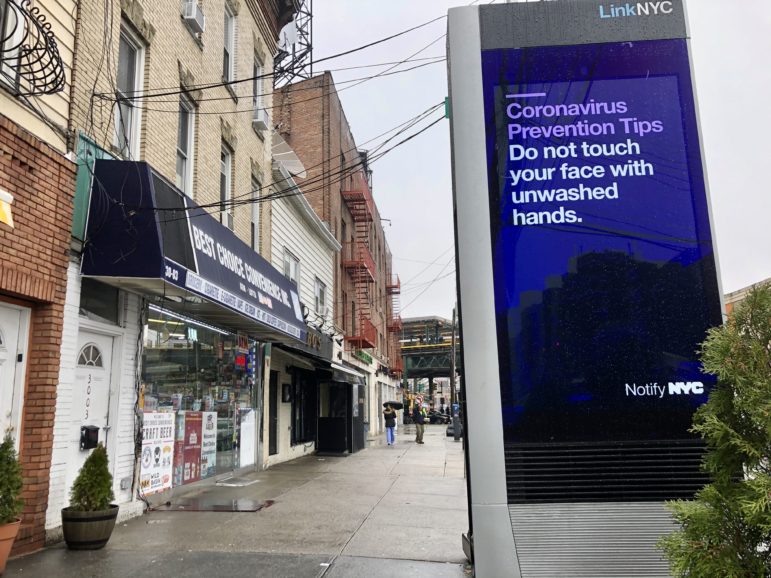
A LinkNYC kiosk in Astoria, Queens, in March 2020 offered COVID safety tips. 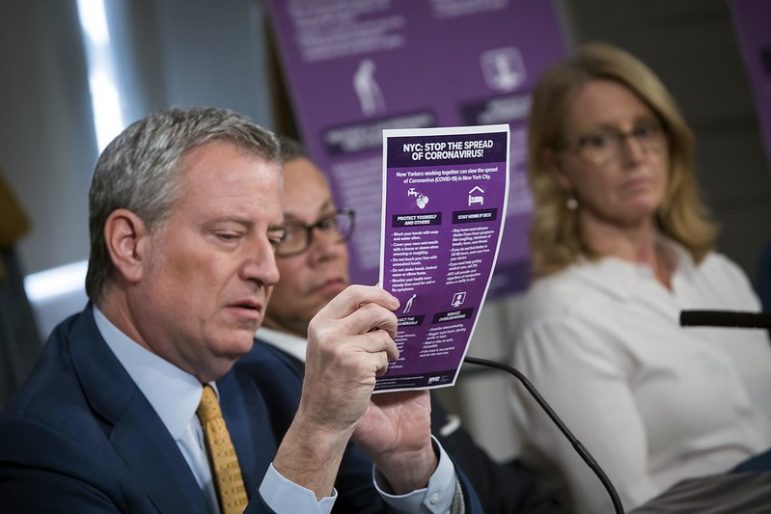
Mayor de Blasio at a press briefing on coronavirus the week of March 17, 2020. 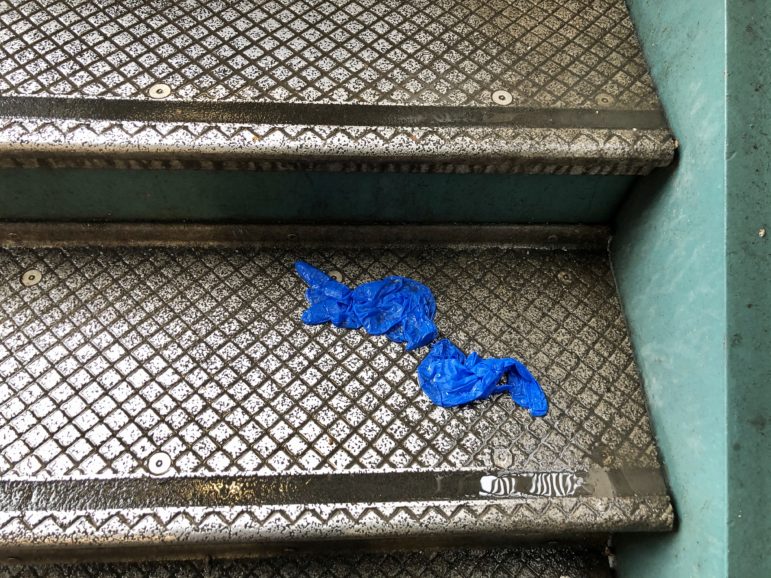
Discarded latex gloves on the platform stairs at Queensboro Plaza. 
The canned goods aisle at the Whole Foods on the Upper East Side on March 13, 2020.
During the earliest days of the city’s shutdown the week of March 14, 2020, many supermarket shelves were bare as New Yorkers stocked up on food and supplies. Housing advocates and local leaders began calling for a freeze on rent payments and evictions, and the city’s mobile vendors were already feeling the financial impact of near-empty streets and public spaces:
For most street vendors at the Bronx Terminal Market, sales started to decline on Monday, March 9th. Most of the street vendors in that spot reported at least a 50 percent reduction in sales. For example, a vendor of winter hats and other headwear said he used to sell approximately $200 per day, and after March 9th he just sold $50 worth. A corn elotes and tamales vendor also reported a 50 percent sales reduction, though, for him, the hit came over this past weekend.
Nine Days After ‘Black Monday’, Small Businesses Await Start of Relief Programs (March 18, 2020)
“When the mayor decides to close these stores,” said one of the vendors pointing at the Bronx Terminal Market behind his cart, “then it will be when all of us are going to feel the real hit. It will be the end of our businesses because nobody is going to come by.”
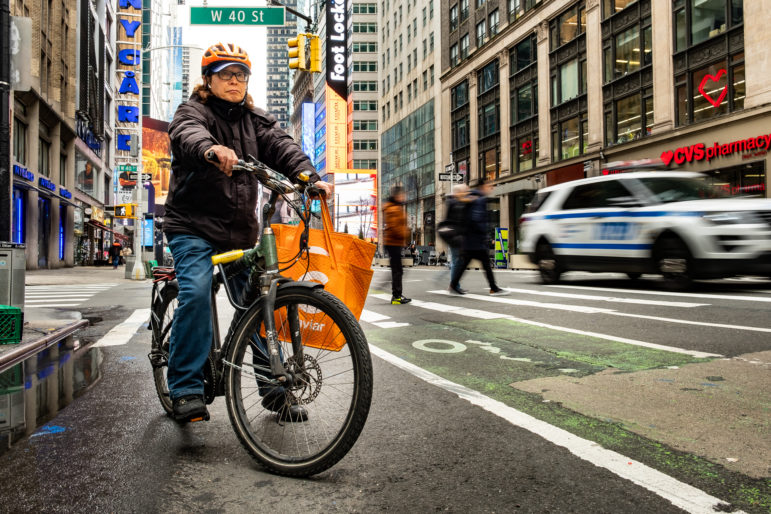
Adi Talwar
Flushing resident Jack Lee, 59, delivering food for the ordering platform Cavier in March 2020. At the start of the pandemic shutdown, Mayor de Blasio declared a temporary suspension of the city’s e-bike ban at the urging of city leaders calling for the city to treat delivery workers as essential workers. The electric bikes are popular among food delivery workers.
“Right now I have to work, but not many orders are coming in. That means less income. But I have to keep coming to Manhattan for work so I have at least some income to pay my bills and rent,” Lee told City Limits at the time.
READ MORE: Delivery Workers Face Challenges on Front Line of Disease Response

Adi Talwar
An empty subway car on a northbound 6 train as it departed from 59th around 5:30pm on March 18, 2020.
MTA ridership—and therefore, MTA revenue—dropped significantly during lockdown, prompting officials to turn to the federal government for relief aid. On March 19, 2020, ridership was down 60 percent on the subways, 49 percent on buses, 90 percent on Metro-North and 67 percent on Long Island Rail Road.
“A lot of scientists are saying that this social distancing might last for a year, and that’s a huge blow to transit,” Nick Sifuentes, executive director for the Tri-State Transportation Campaign, told City Limits at the time.
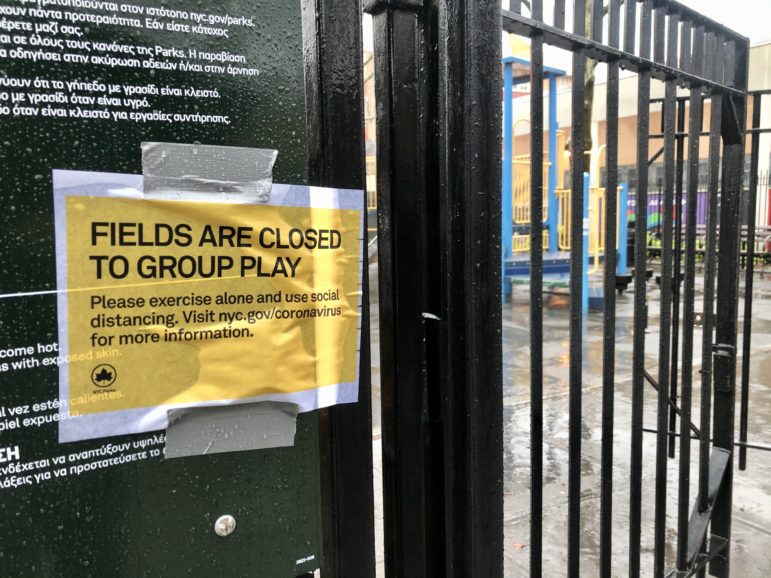
Jeanmarie Evelly
The playground at Athens Square Park bore a sign asking visitors to exercise alone. The Parks Department closed city playgrounds at the start of April 2020.
COVID-19 restrictions changed the way New Yorkers lived their lives on a number of fronts. Nursing homes began restricting or outright banning visitors, leaving families looking for new ways to connect to their older relatives. “What we are concerned about is that she might develop some sort of depression or she might just die of a broken heart,” Yolanda Czerech said of her grandmother who was in a nursing home in Middle Village, Queens.
The launch of remote schooling also caused hardship for many families with children, particularly those living in the city’s homeless shelters. “I’ve been calling all day. I’m trying not to stress,” Kanjella Orr, who was living in a shelter in Hunts Point at the time with her four children.
The kids’ schools gave the family two laptops, but the shelter’s WiFi didn’t reach their unit. “Tomorrow I will see if the shelter has a common space downstairs we maybe can sit in to be closer to the WiFi,” she told City Limits.
READ MORE: Online Learning Means New Barriers for NYC’s Homeless Students
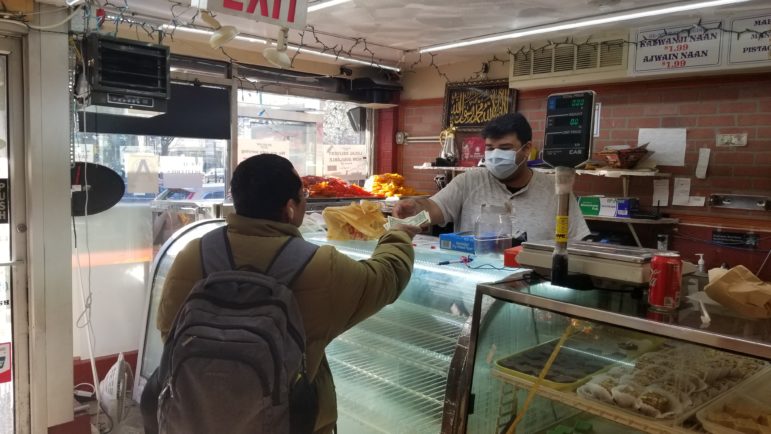
Bridget Bartolini
At Al-Naimat in Jackson Heights, owner Abdul Hamid serves one of the final customers on March 27th, shortly before closing the restaurant.
The suspension of indoor dining left many restaurants struggling to stay afloat. At Al-Naimat Restaurant & Sweets in Jackson Heights, owner Rizwan Hamid, 35, made the tough call to temporarily shutter the shop as COVID-19 cases rose across the city. “It’s in our religion to give, to feed. The Muslim and Pakistani community love to feed. My dad and mom love to feed people,” he said at the time. “It’s good for the heart.”
READ MORE: City’s Small Businesses Need Rent Stabilization to Survive COVID-19, Advocates Say
READ MORE: Amid Unemployment and Restrictions, Latino Businesses Struggle
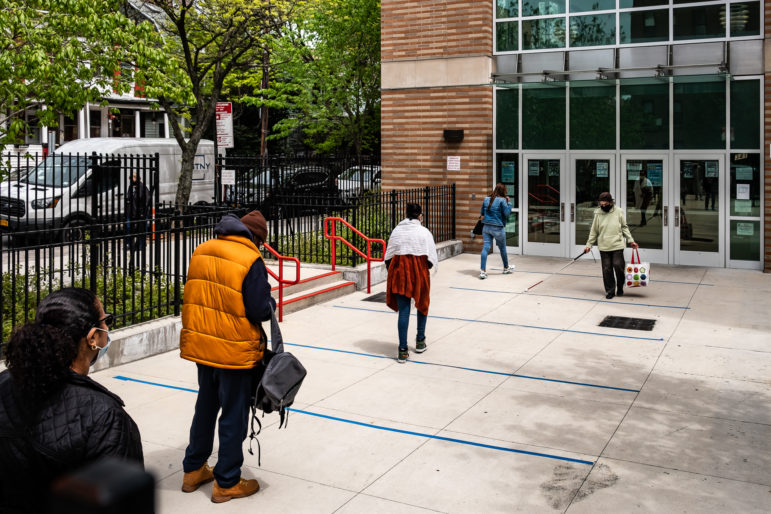
Adi Talwar
Residents lined up at one of the city’s free meal hubs in May 2020.
Hunger quickly emerged as one of the biggest needs. The city began using shuttered school cafeterias for food production, turning schools into hubs handing out free meals and working with the city’s sidelined taxi drivers to deliver meals to seniors and other home-bound New Yorkers. “Food is one of the first things people need when their typical resources and support dry up,” says Center on Budget and Policy Priorities senior policy analyst Ed Bolen.
READ MORE: City’s Efforts to Meet Food Crisis Evolve; Questions About Long Term
READ MORE: COVID-19’s Unrelenting Impact on Hunger in New York City
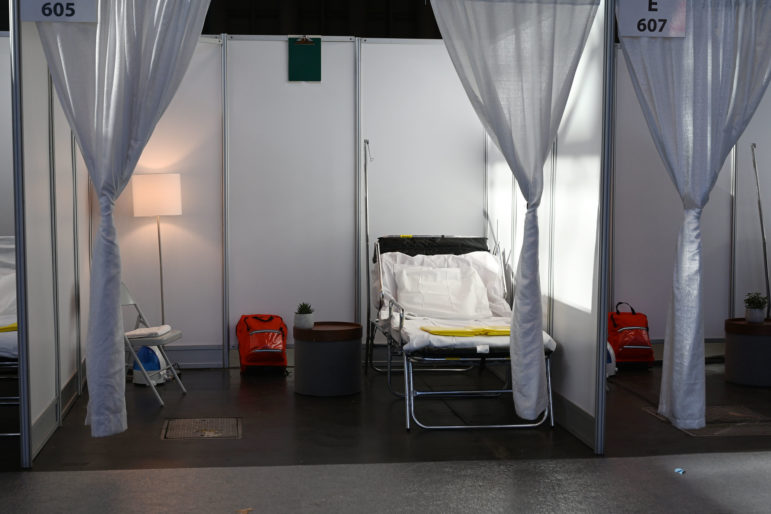
NYS Governor’s Office
The state opened a 1,000-bed Temporary hospital at Jacob K. Javits Convention Center in late March 2020.
As COVID-19 cases and deaths rose across the city and officials scrambled to open makeshift hospitals in Central Park and in venues like the Javits Center, healthcare advocates called on the state to reopen some of the hospitals that were shuttered in recent years, as well as issue a “moratorium” on future closings or downsizings, citing the closure of dozens of healthcare facilities across New York in recent decades.
“I think the assumption behind all that downsizing now has been called into question,” Lois Uttley, of the nonprofit healthcare advocacy group Community Catalyst, told City Limits at the time. “Now we need to ask: How much are we spending to convert the Javits Center to a hospital, to rent hotel rooms to house patients? The idea that we were saving money by getting rid of hospital beds now doesn’t seem like it was wise.”
READ MORE: Decades of Shrinking Hospital Capacity ‘Spelled Disaster’ for New York’s COVID Response
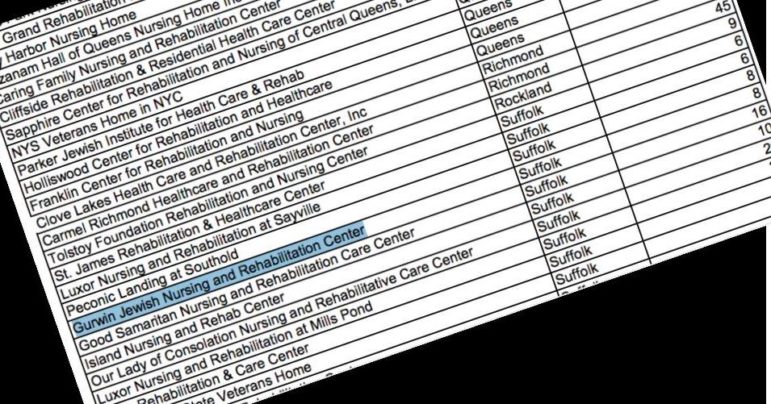
NYS DOH
A page from the state’s official breakdown of nursing home death tolls. Gurwin says its COVID-19 count (at press time) is actually 37.
New York nursing homes became deadly hotspots for COVID-19, and former Gov. Andrew Cuomo’s handling of the crisis at such facilities became a source of outrage and widespread criticism (as well as the subject of an investigation by the Attorney General’s office). In May 2020, City Limits reported on the devastation of the pandemic at one nursing home on Long Island. “We had six people die in just three days. It’s catastrophic,” one nurse at the facility lamented. “Some of them were like family to us. They even knew my kids.”
READ MORE: A Nursing Home Had One COVID Case. Then Came the New, Infected Patients.
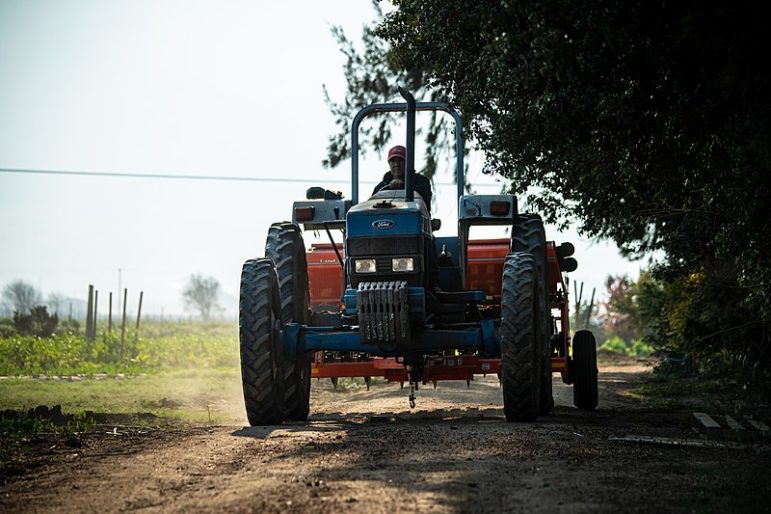
USDA
New York’s farmworkers, many of whom are undocumented immigrants, were particularly hard-hit during the pandemic, as they often work and live in close quarters and are frequently dependent on their jobs to provide housing during seasonal work. City Limits wrote about those housing concerns, what happened to farmworkers who came down with COVID-19 and later, industry’s push to be included in the early phases of the state’s vaccine rollout.
READ MORE: Undocumented, Essential and Sick: COVID-19 Comes to the Farm
READ MORE: Farmworkers Left Out of NY’s Vaccination Plans, Despite Federal Priority
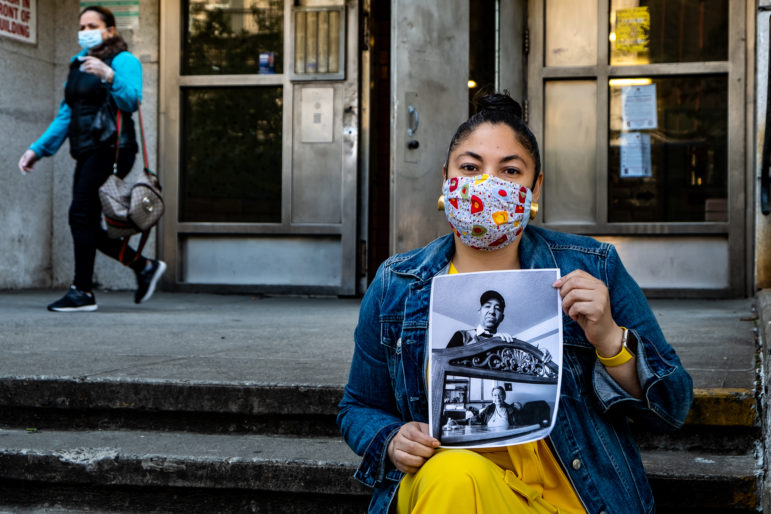
Adi Talwar
Ramona Ferreyra in front of her grandmother’s apartment building at NYCHA’s Mitchel Houses in the South Bronx. Ferreyra is holding a portrait of Luciano Mercado, a neighbor in the building who died in April 2020 from COVID-19.
READ MORE: COVID-19 at the Mitchel Houses–Communication Issues, Cleaning Delays and a Farewell to Mr. Mercado
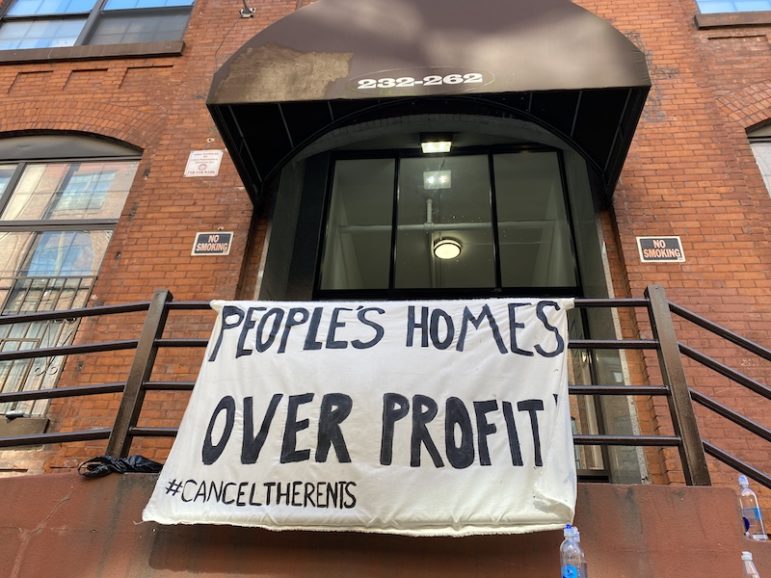
Sadef Ali Kully
A sign protesting rent collections in Brooklyn during the height of the Coronavirus epidemic.
Housing has been a central issue throughout New York’s pandemic, as elected officials grappled with how to keep people in their homes amidst lockdown measures and rising unemployment. Advocates early on called for the cancellation of rent, and others waged rent strikes. The state passed a series of eviction moratoriums that remained in place, in different forms, until January of 2022.
New York included $2 billion in the state budget a year ago to launch the Emergency Rental Assistance Program (ERAP), which covered backrent for tenants who lost income due to COVID-19, though the fund was exhausted several months after opening, prompting calls for more federal funds to replenish it.
READ MORE: End of Eviction Freeze Could Mean Big Business for NYC’s Marshals
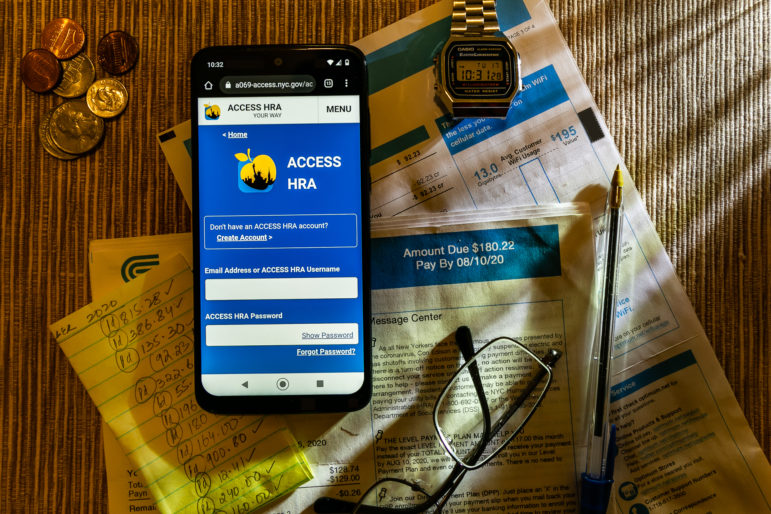
Adi Talwar
The HRA’s app that allows residents to apply for benefits online has been a convenience for many and a challenge for others, as applications for the city’s cash assistance program have soared during the pandemic.
In New York City, applications for cash assistance—a.k.a. welfare—jumped 53 percent in March 2020 compared with March 2019, and grew steadily during the pandemic months to follow. The huge rise in need forced city agencies, particularly the Human Resources Administration, to revamp its operations in order to vastly expand the city’s social safety net. “We’re seeing people who never had to apply for benefits before apply for them now.”
READ MORE: Big Response, Huge Need: NYC’s Welfare System Amid COVID-19
and Gun Hill Road in the Bronx, from 2:35 to 3:35 p.m. on Dec. 11. // Adi Talwar
Long lines for COVID-19 test sites became a common sight across the five boroughs, particularly ahead of holidays. The above video was recorded during on hour outside a COVID-19 testing site on the corner of Jerome Avenue and Gun Hill Road in the Bronx, from 2:35 to 3:35 p.m. on Dec. 11, 2020.
READ MORE: To Test or Not to Test: The Latest on New York’s COVID-19 Screening Saga
READ MORE: Checking in on Lines at NYC’s COVID Test Sites as Infection Numbers Rise

Edson Silva receives the COVID-19 vaccine at a community health clinic in Queens in March 2021. 
A vaccine distribution site at the South Bronx Educational Campus located on St Ann’s Avenue. 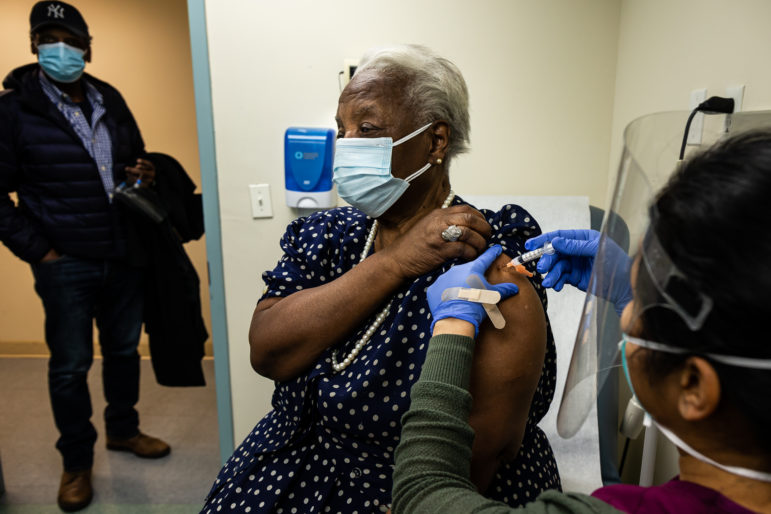
Elsa receives a COVID-19 vaccine in Queens in March 2021. 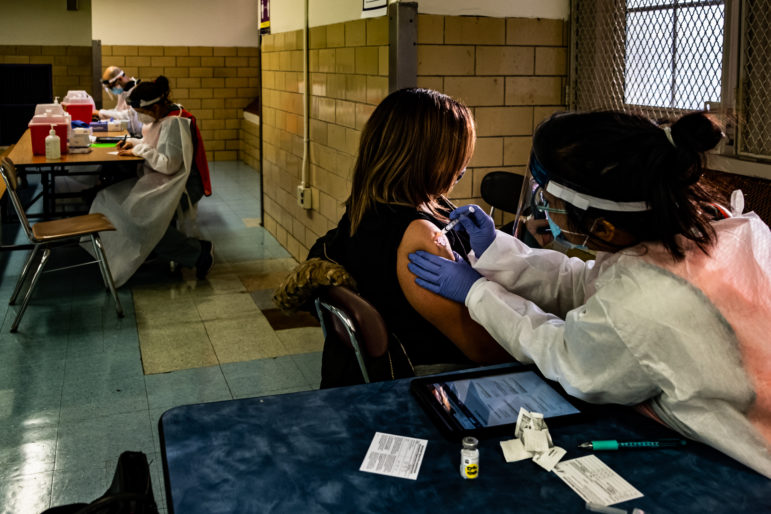
A person getting vaccinated at the South Bronx Educational Campus Vaccine Hubs located on St Ann’s Avenue. 
A person getting vaccinated at the South Bronx Educational Campus Vaccine Hubs located on St Ann’s Avenue.
New York administered its first COVID-19 vaccine to a city nurse in December 2020. In the months that followed, city state leaders faced tough decisions about how to best administer a vaccination program at a time when availability was limited. Later, the struggle became about how to engage vaccine-hesitant New Yorkers into getting the shot.
READ MORE: Biden Plan Offers ‘Hope’ for City’s Sluggish Vaccine Rollout, Mayor Says
READ MORE: NY’s Prisons & Jails Are ‘Hotbeds’ for COVID-19, Advocates Say in Call for Full Vaccine Access
READ MORE: ICE Won’t Say How Many Immigrants Have Been Vaccinated at New York’s Largest Detention Facility
READ MORE: As They Return to Group Shelters, Homeless New Yorkers Make Vaccine Choices

Adi Talwar
On a wet Monday morning in June 2021, Vocal-NY and New Yorkers experiencing homelessness organized a rally across the street from Gracie Mansion.In the summer of 2021, as the city moved forward with the phases of its reopening plan, New Yorkers experiencing homelessness protested the de Blasio Administration’s decision to phase out the use of hotels and return people to congregate group homeless shelters.
“It’s like going from heaven to hell,” Patti Mullings told City Limits in June of last year, after she was moved from an Upper West Side hotel room, where she shared a bathroom with other person, to sleeping on a cot in a group shelter where she shared toilets and showers with about 200 other women.
READ MORE: Thousands Being Sent Back to Homeless Shelters in Return to Pre-Pandemic Status Quo
READ MORE: At Brooklyn Homeless Shelter, Staff and Residents Readying for Return
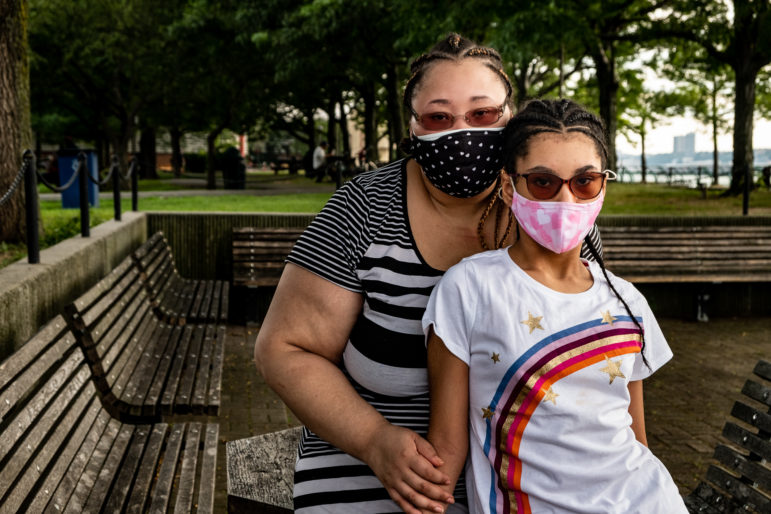
Adi Talwar
Katrice Bryson with her 12-year-old daughter. Bryson has two autoimmune diseases, prompting her to seek out remote school options this year.
In September, New York City students headed back to school for their second full academic year since the pandemic began—but this time, the city offered only an in-person option, an effort by the de Blasio administration to make up for the learning loss and academic inequities worsened by remote learning. But the decision did not sit easy with many families, particularly those with immunocompromised members, who pushed for the DOE to restore a virtual option.
“You’re just basically telling us we have to sit up here and we have to pray every day to make sure that our kids don’t come down with the virus,” one mother told City Limits at the time.
READ MORE: As NYC Students Head Back to School, Immunocompromised Families Push for Remote Option

Adi Talwar
Gail Smalls, 71, calling bingo numbers at the PSS King Towers Senior Center in Harlem.
Senior Centers across the five boroughs were shuttered quickly at the start of the pandemic, leaving many older New Yorkers who relied on the system for meals and social interaction adrift for 16 months.
“I didn’t even know the day. It wasn’t even me saying Monday or Tuesday. It was the day before, the day after. Why should I get dressed? I’m not going anywhere. Why should I get out of my bed? I’m not going anywhere,” said Gail Smalls, 71, who frequents the PSS King Towers Senior Center in Harlem, where she said the staff and fellow clients are like family.
Senior Centers reopened with some restrictions last summer—and Smalls told City Limits this fall that she was thrilled to have that sense of almost-normalcy back.
“When I leave home and I walk here and I come through the door… It’s joyful, it’s happiness,” she said.
READ MORE: After Pandemic Reopening, NYC Senior Centers Adjust to New Normal
In 2022, much of the public discourse around the pandemic has been related to New York’s ongoing economic recovery, and what that process should look like. Queens Borough President Donovan Richards is calling for the city to streamline its pandemic response into one new office that would report to the mayor, and address things like long testing lines and equitable distribution of vaccine sites.
“We’re two years in, and we shouldn’t be making the same rookie errors going into 2022,” Richards said during a press conference in January where he unveiled the proposal. The office would operate as long as the pandemic remains a threat. “I don’t think this office needs to exist for the next thousand years,” Richards said sat the time. “Obviously, this pandemic is not over yet.”
READ MORE: Should NYC Have a Dedicated ‘COVID Recovery’ Office?









